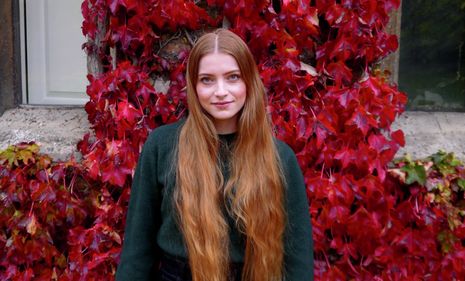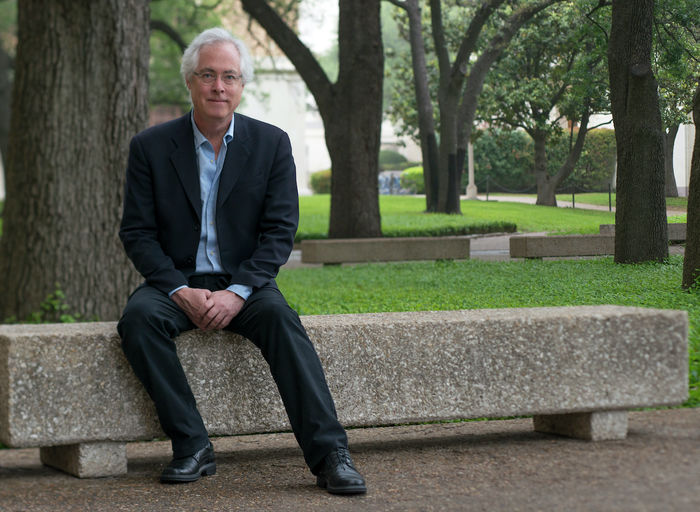Daisy Dixon on aesthetics and the philosophy of art
Ming Kit Wong speaks to Dr. Daisy Dixon, Research Fellow in Philosophy and Art at Peterhouse, about her career and work in the philosophy of art

There are philosophers and there are artists, but there are few who are both at once; and Dr. Dixon is one of them. “A lot of people were confused by what I was doing—‘art and philosophy, what a weird degree’—but it made so much sense to me; it’s so much a part of my identity. And that’s when the academic in me started to emerge. It’s not just that I want to do this all the time: it also feels right for me, that I ought to be doing this,” she says.
I ask her who came first, the artist or the philosopher? “I was an artist first—it was the subject I found easiest at school and I loved it. The plan was to go to art school, and I ended up going to Reading [University] which had this joint program in art and philosophy. It was very practical, being in a studio all the time, but then I would also be doing logic and the philosophy of language in the philosophy department.”
“The artist does not have a last say on what the art is doing but you also can’t completely separate it from its maker”
“But I learnt very quickly that I shouldn’t let philosophy and art interact in the wrong way: I tried to use art to illustrate a philosophical position, and the art suffered for it because it was being held hostage. From that point on I focused more on the process and exploring medium and material within art, and not worry too much about what I was trying to say with it. Art was much more about what I was trying to do with it; what experience I was trying to create with it.
“So I try to keep my projects separate. If anything, my art informs my philosophy: it gives clearer answers to me. For example, one debate in philosophy is how much the intention of the author determines the meaning of the artwork. And obviously this matters for moral and political reasons: do we care what the artist was trying to express, or do we have more autonomy as viewers? From my own experience, I learnt very quickly that artwork can have multiple interpretations, often beyond the intention of the author. But you’re still behind it; it still comes from you—what I don’t want is the ‘death of the author’ approach. I think it’s wrong to separate art from its origins. It can’t just mean whatever you want to mean: there are still restrictions. The artist does not have a last say on what the art is doing but you also can’t completely separate it from its maker.”
What does it mean to study art philosophically, as opposed to being an art critic or historian of art? Dixon explains that “the philosophy of art kind of hovers above art theory and art history to ask more fundamental questions about the nature of art itself: What does it mean for an object to be an artwork? How do we define art? What’s the relation between art and morality? If an artwork has moral properties, does that make it any better or worse as an artwork? What does it mean for something to represent or depict or imitate something else in reality? What is artistic value—what is it that makes an artwork good or bad?”
“We’re often not concerned with particular movements of art, although certain artistic movements make it more difficult for us: if you’re trying to define conceptual art, for example, it’s often tricky because it tends to be ‘anti-aesthetics’ or attempts to move away from straightforward standards of beauty or depictions of reality. So a lot of the definition of art has to pay attention to movements and concerns in the art world. There are many definitions of art and they do vary over time and they are going to change as art continues to develop. If you want your definitions to do good work, you’d want to accommodate things that ordinary people would call art. The problem now is that over the last hundred years, art itself has become very complex and self-aware and self-reflective to the point where a lot of ordinary people don’t know what art is anymore. And philosophers generally try to reflect what we would call ‘folk-belief’ or intuition about what something is art. Since art is a social phenomenon, it is going to keep changing.”
“There seems to be a distinctively aesthetic way we learn about the world, and a lot of the time it further entrenches unjust hierarchies”
I ask Dixon about her current research focus: “My PhD was about looking at how visual art behaves similarly to speech in how it expresses meaning; how artwork can express actual messages and propositional content and have a kind of force to them. So a painting might assert or protest something through speech-acts that we normally do with words.”
“Most recently I’ve been looking at art as a kind of hate speech—art that can express racist or sexist messages much like how our ordinary speech might—and the creative ways that we can respond to those artworks. Should we censor them? Should we cancel artists who were creating objectionable things or were objectionable people? Or should we interact with them in more creative ways to highlight their hateful content though kind of a curatorial activism? So when the Edward Colston statue came down last summer that was very important to me for philosophical reasons, among others. Instead of the current plans, I personally think they should have left it in the water and created an exhibit around that. I think that would have been very cool.”
For Dixon, art plays an important role in politics. As she tells me, “In the last six months my work has moved into political philosophy. A few philosophers including myself have started working on the notion of aesthetic injustice, which entails looking at how an aesthetic object might express political messages, and how certain art forms can perpetuate certain injustices. For example, how the genre of the nude—and when people talk about the genre of the nude they usually refer to the white, female nude—how this familiar form that we see in all of our Western museums, via aesthetic mechanisms, expresses the idea that women are inferior and that they don’t have a subjectivity. So you have an aesthetic form that perpetuates the mindset that women are historically objects or trivialised. There seems to be a distinctively aesthetic way we learn about the world, and a lot of the time it further entrenches unjust hierarchies.”
“Aesthetics just seems to be central to so much of what we do in our social lives, which is kind of frustrating because aesthetics, at least in the analytic school of philosophy, is a very small field in contrast to metaphysics and epistemology. But aesthetics is always very popular amongst students and undergraduates, it’s a hugely important area of philosophy, and some philosophers have even said that aesthetics is the hardest one, because you’re doing all forms of philosophy at once around these strange objects that we call artworks. I’m hoping the more that aesthetics is seen to play a role in our political ideology, the more it will be taken seriously in the discipline.”
 Interviews / You don’t need to peak at Cambridge, says Robin Harding31 December 2025
Interviews / You don’t need to peak at Cambridge, says Robin Harding31 December 2025 News / Downing investigates ‘mysterious’ underground burial vault 29 December 2025
News / Downing investigates ‘mysterious’ underground burial vault 29 December 2025 News / Unions protest handling of redundancies at Epidemiology Unit30 December 2025
News / Unions protest handling of redundancies at Epidemiology Unit30 December 2025 Lifestyle / Ask Auntie Alice29 December 2025
Lifestyle / Ask Auntie Alice29 December 2025 Features / ‘Treated like we’re incompetent’: ents officers on college micromanagement30 December 2025
Features / ‘Treated like we’re incompetent’: ents officers on college micromanagement30 December 2025









